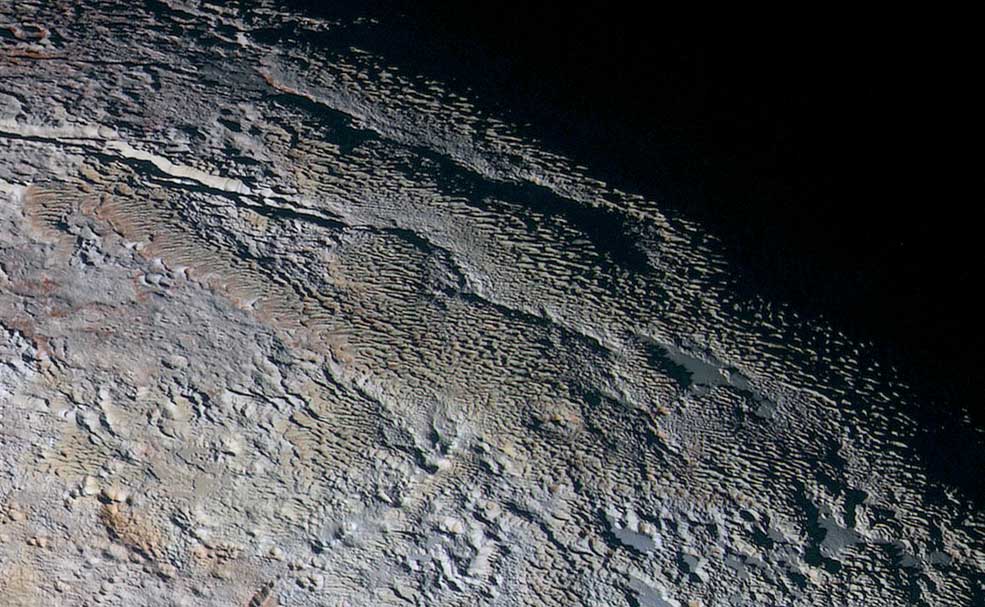-
Tips for becoming a good boxer - November 6, 2020
-
7 expert tips for making your hens night a memorable one - November 6, 2020
-
5 reasons to host your Christmas party on a cruise boat - November 6, 2020
-
What to do when you’re charged with a crime - November 6, 2020
-
Should you get one or multiple dogs? Here’s all you need to know - November 3, 2020
-
A Guide: How to Build Your Very Own Magic Mirror - February 14, 2019
-
Our Top Inspirational Baseball Stars - November 24, 2018
-
Five Tech Tools That Will Help You Turn Your Blog into a Business - November 24, 2018
-
How to Indulge on Vacation without Expanding Your Waist - November 9, 2018
-
5 Strategies for Businesses to Appeal to Today’s Increasingly Mobile-Crazed Customers - November 9, 2018
New photos from Pluto ‘astound’ NASA scientists
Speaking about the “snakeskin” region, “it’s a unique and perplexing landscape stretching over hundreds of miles”, said William McKinnon from Washington University in St. Louis.
Advertisement
Of course, Arrakis was actually a desert planet and probably not as eerily colorful as the latest super high-res shot of above.
That probably makes more sense than Sandworm tracks, but the creatures could still be hibernating down below the surface of the Sputnik Planum – the flat area in the new close-up below that looks pockmarked by what could be frozen dunes of “bright volatile ice particles”, according to NASA.
And these latest images show some incredibly interesting features including mountain ranges, dunes, and the shorelines of shrinking glacial lake of ice. “Maybe it’s some combination of internal tectonic forces and ice sublimation driven by Pluto’s faint sunlight”.
The snakeskin photo, taken at the dividing line between day and night, shows new levels of detail in the topography and composition of Pluto. Mountains along the west flank of Sputnik lack methane as well. No methane shows up inside deep craters or across the dwarf planet’s darker regions. “The viewer is encouraged to zoom in on the image on a larger screen to fully appreciate the complexity of Pluto’s surface features”.
Methane maps of the surface show that the informally named Sputnik Planum has plenty of methane but Cthulhu Regio, a dark patch relatively near by the icy plain, has none.
“It’s like the classic chicken-or-egg problem”, Will Grundy, New Horizons scientist, said in a statement.
Scientists like McKinnon are trying to figure out what can account for the unusual terrain.
NASA has released a new color version of the New Horizon probe’s iconic “heart” photo. “I wish Pluto’s discoverer Clyde Tombaugh had lived to see this day”.
Advertisement
Because of the vast distances involved – more than 3 billion miles – the size of the spacecraft’s antenna and the power of its transmitters, it will take more than a year and a half for New Horizons to beam back all of its stored imagery and data.




























